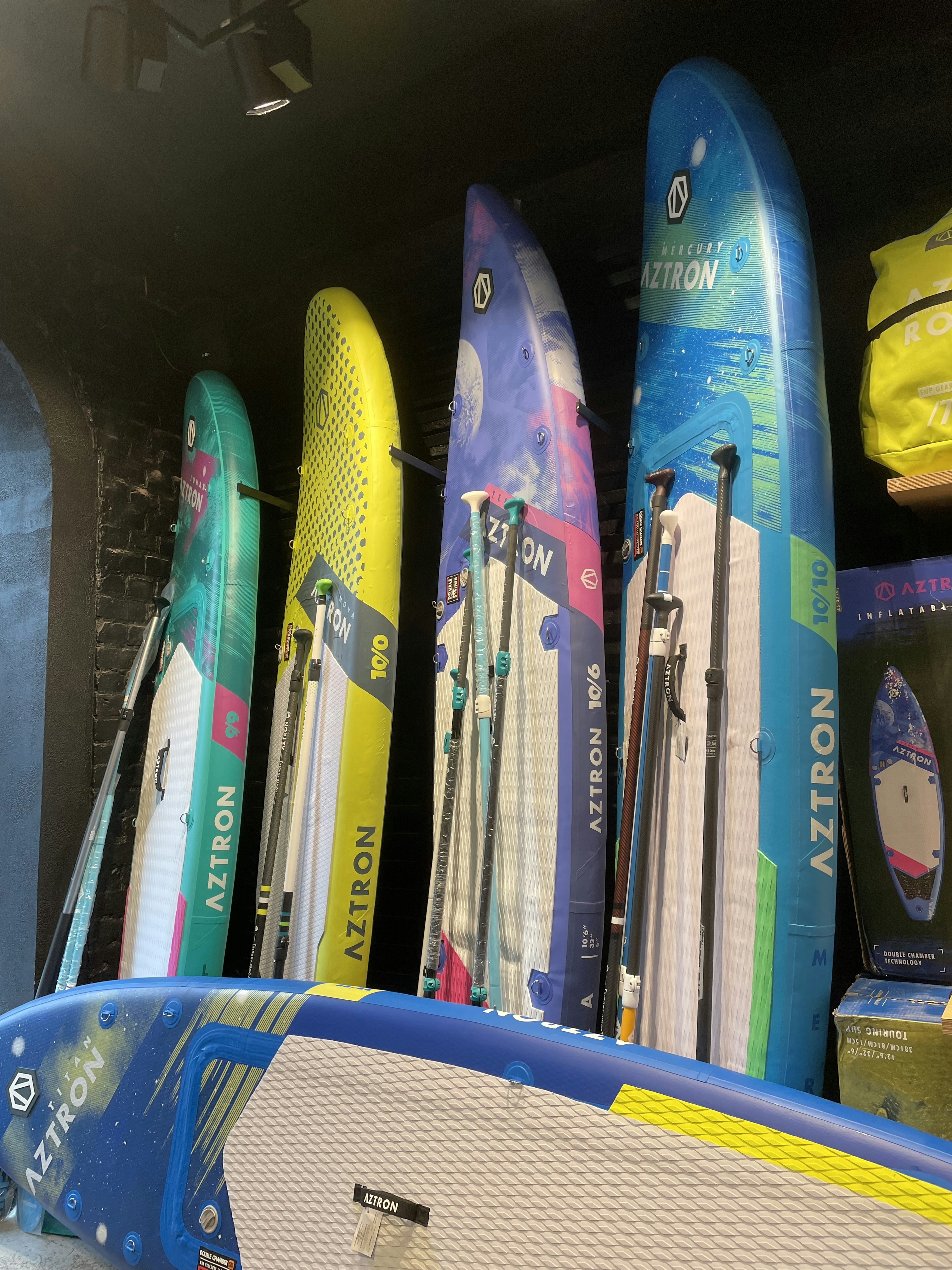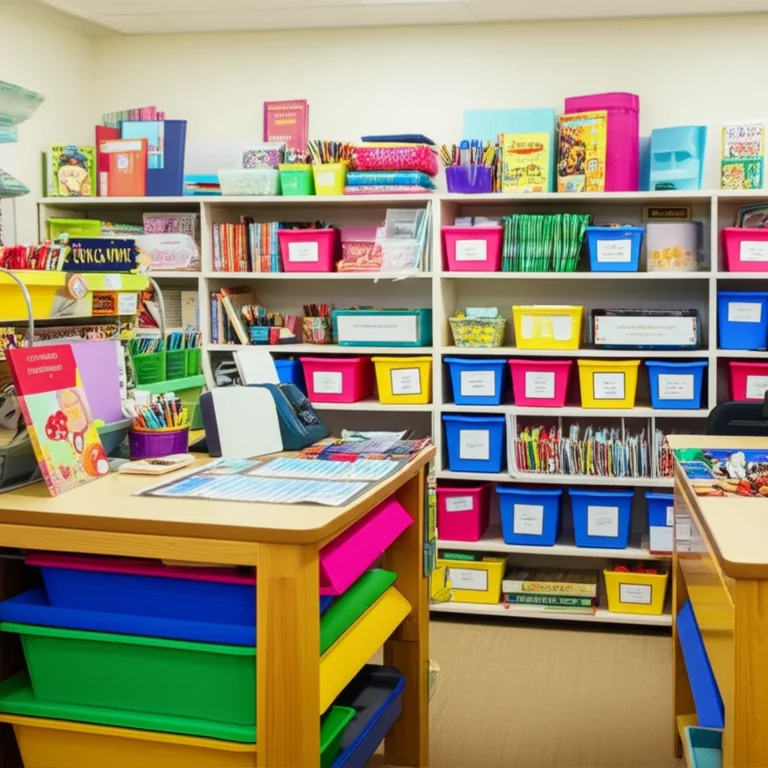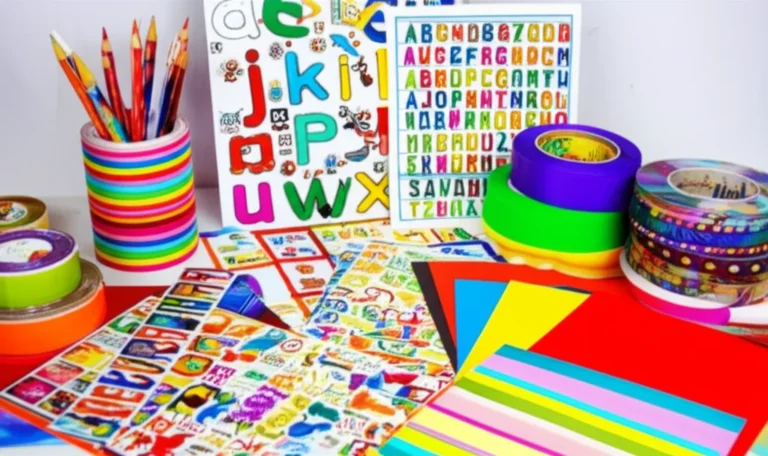Support our educational content for free when you purchase through links on our site. Learn more
What Percentage of Teachers Buy Their Own Supplies? 📚 (2025)
Did you know that 95% of teachers spend their own money on classroom supplies? That’s right—most educators are quietly footing the bill for essentials that keep their classrooms running smoothly. From pencils and paper to tech gadgets and snacks, teachers are investing hundreds, sometimes thousands, of dollars every year out of pocket. But why is this happening, and how much are they really spending?
In this article, we unpack the surprising statistics behind teacher supply spending, explore where the money goes, and share savvy tips to stretch every dollar. Plus, we reveal how you can help lighten the load for the heroes shaping our future. Stick around for the top 10 most common supplies teachers buy themselves and learn how trends are shifting in 2025!
Key Takeaways
- Nearly all teachers (95%) buy classroom supplies with their own money, often spending between $500 and $750 annually.
- Inflation, stagnant salaries, and underfunded schools are the main reasons teachers bear this financial burden.
- Most of the money goes toward basic supplies like paper, markers, and cleaning products, but also specialty items for STEM and special education.
- Teachers can save by shopping during back-to-school sales, buying in bulk, and using grants or donations from platforms like DonorsChoose.
- You can support educators by donating supplies or funds, volunteering, or advocating for better school budgets.
👉 Shop essential classroom supplies:
Classroom Supplies on Teacher Supply Store™ | Amazon Teacher Supplies | Walmart Teacher Supplies
Table of Contents
- ⚡️ Quick Tips and Facts About Teachers Buying Supplies
- 📚 The Real Story Behind Teachers’ Out-of-Pocket Supply Spending
- 🔍 What Percentage of Teachers Buy Their Own Supplies?
- 💸 Where Does All That Teacher Supply Money Go?
- 📉 The Financial Strain: Why Teachers Spend So Much Out of Pocket
- 🏫 Sources of Support: Grants, Donations, and School Budgets
- 🛒 Top 10 Most Common Supplies Teachers Buy Themselves
- 💡 Smart Shopping Tips for Teachers: Stretching Your Supply Budget
- 📈 Trends Over Time: How Teacher Supply Spending Has Changed
- 🌍 Comparing Teacher Supply Spending Around the World
- 📊 Key Takeaways: What Every Educator and Supporter Should Know
- 🎯 How You Can Help: Supporting Teachers With Supplies
- 🔗 Recommended Links for Teacher Supply Resources
- ❓ FAQ: Your Burning Questions About Teacher Supply Spending Answered
- 📚 Reference Links: Trusted Sources and Studies
- 🏁 Conclusion: Wrapping Up the Supply Story
Quick Tips and Facts About Teachers Buying Supplies
As educators at Teacher Supply Store™, we understand the importance of having the right supplies for a successful learning environment. If you’re looking for tips on how to stretch your supply budget, check out our article on 📚 25 Must-Have Homeschooling Supplies for Success (2025). Here are some key facts and tips to get you started:
- The average teacher spends between $500 to $750 of their own money on classroom supplies annually, according to the National Center for Education Statistics.
- A significant percentage of teachers reach into their own pockets to purchase classroom necessities, with some spending upwards of $2,000 or more per year.
- Basic supplies like paper, pencils, and markers are often in short supply, leading teachers to purchase these items out of pocket.
- To make the most of your budget, consider shopping during back-to-school sales or using discount codes from retailers like Amazon or Walmart.
- Don’t forget to take advantage of the $300 tax deduction for qualified educator expenses, which can help offset the cost of supplies.
The Real Story Behind Teachers’ Out-of-Pocket Supply Spending
So, why do teachers spend so much of their own money on supplies? The answer lies in a combination of factors, including inflation, lower educator salaries, and under-resourced schools. As Dammian Tucker, an elementary special education teacher, notes, “I spend between $1,500 and $2,000 annually on supplies, which is a significant burden on my salary.”
Impact of Inflation
With prices for school supplies increasing by almost 24% in the past two years, teachers are feeling the pinch. As Christopher Renner, an ESL teacher, documents, “I spent $2,400 last year on supplies, which is a significant increase from previous years.”
Consequences of Under-Resourced Schools
Under-resourced schools are a major contributor to the problem, with many teachers forced to purchase basic supplies like paper and pencils out of pocket. As Jamie Epps, a teacher, notes, “I spent over $6,000 on basic supplies and materials for science, including a class pet and a fish tank for marine science studies.”
What Percentage of Teachers Buy Their Own Supplies?
According to the National Center for Education Statistics, a significant percentage of teachers spend their own money on classroom supplies. In fact, 95% of public school teachers reported spending their own money to buy classroom supplies without reimbursement. As Judy Hall, a teacher, notes, “I spent around $1,500 last year and expect to spend the same this year, which is a significant burden on my salary.”
Breakdown of Spending
So, where does all that money go? Here’s a breakdown of the most common supplies teachers buy:
- Basic supplies like paper, pencils, and markers
- Classroom necessities like tissues, cleaning supplies, and hand soap
- Learning materials like online learning programs, lab equipment, and curricular materials
- Student support like snacks, clothing, and toiletries
Where Does All That Teacher Supply Money Go?
As we’ve seen, teachers spend a significant amount of their own money on supplies, but where does it all go? Here are some of the most common places teachers spend their money:
- Amazon: With its wide selection and competitive prices, Amazon is a popular choice for teachers looking for supplies. 👉 CHECK PRICE on: Amazon | Walmart | Etsy
- Walmart: Walmart is another popular choice for teachers, offering a wide range of supplies at affordable prices. 👉 Shop Walmart on: Walmart | Amazon | Target
- Etsy: For unique and specialty supplies, Etsy is a great option. 👉 Shop Etsy on: Etsy | Amazon | Walmart
The Financial Strain: Why Teachers Spend So Much Out of Pocket
So, why do teachers spend so much of their own money on supplies? The answer lies in a combination of factors, including inflation, lower educator salaries, and under-resourced schools. As Liz Jorgensen, a Michigan teacher, notes, “It’s worth it to have focused, engaged students during independent reading time rather than off-task students due to the fact that they don’t like their book.”
Impact of Lower Educator Salaries
With educator salaries 23.5% lower than comparable college graduates, teachers are feeling the pinch. As Polly Franklin, a teacher, notes, “It’s sad to me that, for a lot of us, any small salary raise we get seems to just go right back into the classroom.”
Sources of Support: Grants, Donations, and School Budgets
So, what sources of support are available to teachers? Here are a few options:
- Grants: Many organizations offer grants to teachers for specific projects or initiatives. CHECK OUT: DonorsChoose | Adopt a Classroom
- Donations: Donations from parents, community members, and local businesses can help supplement teacher budgets. 👉 Shop Donations on: Amazon Wish Lists | GoFundMe
- School Budgets: While school budgets can be limited, they can provide some support for teacher supplies. CHECK OUT: Classroom Supplies | Learning Materials
Top 10 Most Common Supplies Teachers Buy Themselves
Here are the top 10 most common supplies teachers buy themselves:
- Paper and notebooks
- Binders and clipboards
- Crayons and pencils
- Dry erase markers
- Glue sticks
- Organizing bins
- Tissues and cleaning supplies
- Hand soap and sanitizer
- Snacks and water bottles
- Classroom decorations and materials
Smart Shopping Tips for Teachers: Stretching Your Supply Budget
So, how can teachers stretch their supply budget? Here are a few tips:
- 👉 Shop during back-to-school sales: Many retailers offer discounts on supplies during back-to-school season. CHECK OUT: Back-to-School Sales | Teacher Supply Sales
- Use discount codes: Look for discount codes and coupons online to save even more. CHECK OUT: RetailMeNot | Coupons.com
- Buy in bulk: Purchasing supplies in bulk can help save money in the long run. CHECK OUT: Bulk Supplies | Wholesale Supplies
Trends Over Time: How Teacher Supply Spending Has Changed
So, how has teacher supply spending changed over time? Here are a few trends:
- Increased spending: With inflation and under-resourced schools, teachers are spending more of their own money on supplies than ever before.
- Shift to online shopping: With the rise of online shopping, teachers are increasingly turning to online retailers for their supply needs. CHECK OUT: Online Shopping | Teacher Supply Stores
- Growing demand for specialty supplies: With the increasing focus on STEM education and special needs, teachers are looking for more specialized supplies. CHECK OUT: STEM Supplies | Special Needs Supplies
Comparing Teacher Supply Spending Around the World
So, how does teacher supply spending in the US compare to other countries? Here are a few insights:
- Higher spending in the US: Compared to other developed countries, teachers in the US tend to spend more of their own money on supplies.
- More resources in other countries: In countries like Finland and Canada, teachers have access to more resources and support, reducing the need for out-of-pocket spending.
- Cultural differences: Cultural differences also play a role, with some countries placing a greater emphasis on education and teacher support.
Key Takeaways: What Every Educator and Supporter Should Know
So, what are the key takeaways from our discussion on teacher supply spending? Here are a few things every educator and supporter should know:
- Teachers spend a significant amount of their own money on supplies: With inflation and under-resourced schools, teachers are spending more of their own money on supplies than ever before.
- Support is available: From grants and donations to school budgets and online shopping, there are many sources of support available to teachers.
- Advocacy is key: By advocating for increased funding and support, we can work to reduce the burden of out-of-pocket spending on teachers.
How You Can Help: Supporting Teachers With Supplies
So, how can you help support teachers with supplies? Here are a few ways:
- Donate to a teacher’s wish list: Many teachers have wish lists on platforms like Amazon or DonorsChoose. CHECK OUT: Amazon Wish Lists | DonorsChoose
- Volunteer in the classroom: By volunteering in the classroom, you can help teachers with tasks and reduce their workload.
- Advocate for increased funding: By advocating for increased funding and support, we can work to reduce the burden of out-of-pocket spending on teachers.
Recommended Links for Teacher Supply Resources
Here are some recommended links for teacher supply resources:
FAQ: Your Burning Questions About Teacher Supply Spending Answered

Here are some frequently asked questions about teacher supply spending:
- Q: How much do teachers spend on supplies?
A: On average, teachers spend between $500 to $750 of their own money on classroom supplies annually. - Q: Why do teachers spend so much on supplies?
A: Teachers spend so much on supplies due to a combination of factors, including inflation, lower educator salaries, and under-resourced schools. - Q: What can I do to help support teachers with supplies?
A: You can donate to a teacher’s wish list, volunteer in the classroom, or advocate for increased funding and support.
Reference Links: Trusted Sources and Studies
Here are some reference links to trusted sources and studies on teacher supply spending:
- National Center for Education Statistics
- National Education Association
- DonorsChoose
- Adopt a Classroom
Conclusion: Wrapping Up the Supply Story

After diving deep into the world of teacher supply spending, one thing is crystal clear: teachers are the unsung heroes of classroom resources. With approximately 95% of teachers buying their own supplies, often spending hundreds or even thousands of dollars annually, the burden is real and widespread. While this out-of-pocket spending helps create vibrant, engaging, and supportive learning environments, it also highlights systemic funding gaps that need urgent attention.
We explored the reasons behind this phenomenon—from inflation and stagnant salaries to underfunded schools—and uncovered how teachers creatively stretch their budgets, tap into grants, and rely on community support. The stories of educators like Jamie Epps and Ellen Brody-Kirmss remind us of the passion and dedication driving these investments, but also the financial strain it causes.
If you’re wondering whether this trend will continue, the answer is unfortunately yes—unless we collectively advocate for better funding and support. Meanwhile, savvy shopping tips and resources can help teachers get the most bang for their buck.
Our confident recommendation: Support teachers by donating to platforms like DonorsChoose or contributing to classroom wish lists on Amazon. If you’re a teacher, explore bulk buying and seasonal sales to maximize your budget. And remember, every dollar spent by a teacher is an investment in a child’s future.
So, next time you see a classroom buzzing with creativity and warmth, remember—it’s often fueled by the generosity and resourcefulness of educators who go above and beyond. Let’s help lighten their load.
Recommended Links for Teacher Supply Resources
-
Classroom Supplies:
Teacher Supply Store™ Classroom Supplies | Amazon Teacher Supplies | Walmart Teacher Supplies -
Learning Materials:
Teacher Supply Store™ Learning Materials | DonorsChoose | Adopt a Classroom -
Instructional Technology:
Teacher Supply Store™ Instructional Technology | Amazon Educational Tech -
Books on Supporting Teachers and Classroom Management:
FAQ: Your Burning Questions About Teacher Supply Spending Answered

What is the average amount spent by teachers on classroom supplies?
On average, teachers spend between $500 and $750 annually out of their own pockets on classroom supplies, according to surveys by the National Center for Education Statistics and DonorsChoose. However, this average masks a wide range: some teachers spend less than $100, while others, especially those in underfunded or specialized classrooms, may spend upwards of $2,000 or more. Inflation and rising supply costs have pushed these numbers higher in recent years.
Read more about “Do Teachers Have to Buy Their Own Classroom Supplies? 7 Surprising Truths (2025) 🎒”
How do teachers afford to buy their own classroom supplies?
Teachers employ a variety of strategies to manage these expenses:
- Personal budgeting: Many teachers allocate a portion of their salary specifically for classroom needs.
- Grants and donations: Platforms like DonorsChoose and local community support help offset costs.
- Tax deductions: Educators can claim up to $300 annually in qualified expenses on their taxes, reducing their taxable income.
- Bulk buying and sales: Teachers often purchase supplies in bulk or during sales to maximize value.
- Crowdfunding and contests: Some educators use crowdfunding or enter contests to win supplies.
Read more about “10 Must-Have Kaplan School Supplies for Every Classroom (2025) 🎒”
What percentage of a teacher’s salary goes towards buying supplies for their students?
While exact percentages vary widely, estimates suggest that up to 5% or more of a teacher’s annual salary can be spent on classroom supplies. For example, a teacher earning $50,000 annually who spends $2,500 on supplies is dedicating 5% of their income. This is significant, especially considering that teacher salaries have lagged inflation, effectively reducing their purchasing power over time.
Read more about “What Percent of Teachers Buy Their Own Supplies? Shocking Stats (2025) ✏️”
Do schools provide enough funding for teachers to purchase necessary learning materials?
❌ No, most schools do not provide sufficient funding. Many districts allocate limited budgets for classroom supplies, often leaving teachers to fill the gaps. According to the National Education Association, over 90% of teachers report spending their own money because school budgets fall short. Some districts have negotiated modest stipends for supplies, but these rarely cover the full need.
How can community members help reduce the financial burden on teachers?
Community involvement can make a huge difference:
- Donating supplies or money to schools or directly to teachers’ wish lists.
- Volunteering time to assist with classroom needs.
- Advocating for increased school funding at local and state levels.
- Supporting organizations that provide grants and resources to educators.
Read more about “What Does the Average Teacher Spend on Classroom Supplies in 2025? 💸”
Are there any tax benefits for teachers who buy their own supplies?
✅ Yes! The IRS allows educators to deduct up to $300 of unreimbursed expenses for classroom supplies and professional development materials. This deduction is “above the line,” meaning it reduces your adjusted gross income whether or not you itemize deductions. It’s a small but helpful way to ease the financial impact.
Read more about “Do Teachers Really Get Reimbursed for Supplies? 7 Insider Facts (2025) ✏️”
Reference Links: Trusted Sources and Studies
- National Center for Education Statistics (NCES) – Data on teacher spending and education statistics
- National Education Association (NEA) – Advocacy and research on educator expenses
- DonorsChoose – Crowdfunding platform for classroom projects
- Adopt a Classroom – Grants and donations for teachers
- IRS Educator Expense Deduction Details – Official tax deduction information
- Out-of-Pocket Spending on School Supplies Adds to Strain on Educators – NEA article detailing the financial burden on teachers
- Amazon Teacher Supplies – Popular marketplace for classroom supplies
- Walmart Teacher Supplies – Affordable supply options
- Teacher Supply Store™ Classroom Supplies – Curated selection of quality classroom essentials
We hope this comprehensive guide has shed light on the realities of teacher supply spending and inspired you to support the educators who invest so much in our children’s futures! 🌟



